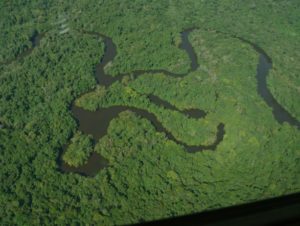 To make an investment option more attractive and economically sustainable over the long-term, two criteria must be met: informational transparency, and a stable business environment. These conditions are essential for forest concession for sustainable management, given that the sector itself demands complex preparation and proper disclosure of information. Take for instance logistics. In most cases, the infrastructure will not always be available, or in the best shape to allow for an efficient production flow.
To make an investment option more attractive and economically sustainable over the long-term, two criteria must be met: informational transparency, and a stable business environment. These conditions are essential for forest concession for sustainable management, given that the sector itself demands complex preparation and proper disclosure of information. Take for instance logistics. In most cases, the infrastructure will not always be available, or in the best shape to allow for an efficient production flow.
The emergence of robust statistics of the forest sector will allow for more accurate analyses and forecasts of the forest products market. In the absence of these, whether from public or private sources, the quality of analysis has languished, causing inadequate planning, and the improper appraisals of the sector. To infuse sustainable forest concessions with economic viability it is also imperative to make it a feasible and attractive option for current and future investors.
Logistical infrastructure is often faced with profound feasibility issues within, as well as outside, the area under a concession contract. These include the aggregate value of the forestry activity, as well as the energy footprint of forest processing, to name a few, and they highlight the need for new kinds of investors, especially institutional ones such as pension funds.
Accordingly, beyond providing concession areas with proper infrastructure for production and transportation, some actions should be promoted which add value to products from forest management. This, in turn, will promote the demand for sustainable forest products and support the inclusion of products from forest concessions in the international market.
Forestry is one of the most promising industries for many national economies, including Brazil. A recent survey by KPMG[1] with forest sector executives in North America confirmed this perception that Brazil is the most desirable investment destination out of 15 countries.
This favorable environment constitutes not only an opportunity to consolidate the current business led by the Brazilian Forest Service, but also to incorporate other investment options, such as degraded lands owned by the Federal Government for purposes of reforestation. To develop this new business, it is key to initially identify possible areas to be reforested, as well as which segments of the forest-based industry would have the greatest interest in investing. Business modeling is also crucial for this investment option, so that it brings financial return for prospective investors.
Another market niche to be explored is the large scale use of forest biomass. Operations in the Amazon forest have a utilization percentage rate to 30% – meaning that for each 1 m³ explored, only 0.3 m³ effectively become a final or semi-final product. The residual 0.7 m³ have mostly no economic use. Therefore, this is undoubtedly a promising opportunity for future business models.
Thus, considering your professional background and current thoughts, we would like your opinion on the following questions:
How to enhance the attractiveness of a native forest concession?
What is the role of governments and official institutions in the promotion of native forest concessions?
Thiago Longo Menezes & Andre Luiz Campos de Andrade
Brazilian Forest Service
Participants in the 2013 Next Generation of Forest Agency Leaders Seminar
________________________________________
[1] KPMG is a global network of professional firms providing Audit, Advisory and Tax services.
